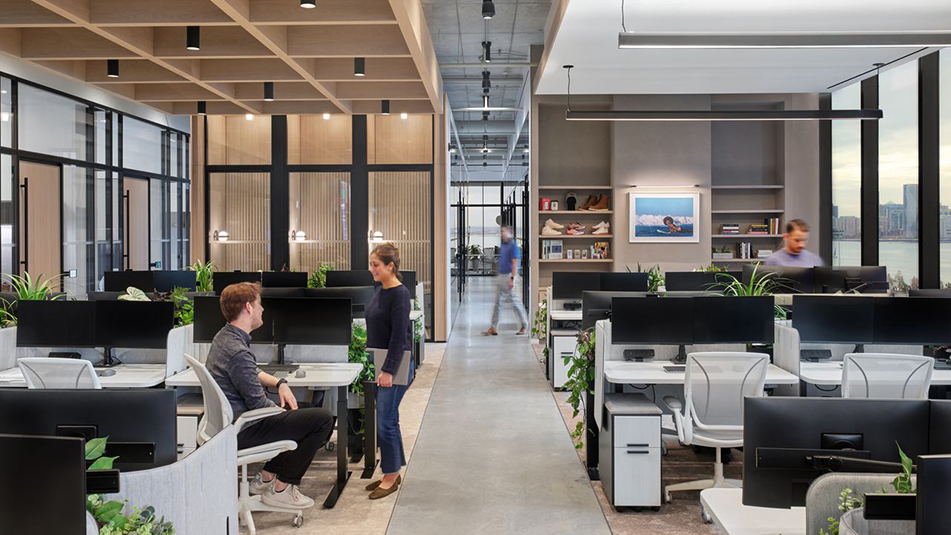Top Three Industrial Real Estate Topics in 2018
The commercial real estate industrial sector roared through 2017 turning the traditional way of thinking on it's head; 2018 is poised to be no different. There are three areas that will continue to see the biggest changes as the industrial markets barrel through 2018. Labor, Technology, and Last Mile Delivery are leading the way in the new industrial revolution.
Labor, Labor, Labor
The traditional mantra of commercial real estate has long been location, location, location. C-suite executives based their real estate decisions on available land or facilities. In 2018 the location strategy will be disrupted, and real estate decisions will be guided by labor. Consumer demand for products is booming throughout the United States. To match increased demand companies must have the labor to fill manufacturing and distribution jobs.
Baby boomers are leaving the workforce at a faster rate than their jobs can be filled. The effect of this phenomenon is being felt in the distribution sector where trucking companies are struggling through a severe driver shortage. In the warehouse industry, the labor force is dwindling as forklift operators and picker packers flock to urban jobs.
A solution to this labor issue is to build or lease facilities where companies can hire an able and affordable workforce. Cresa Consulting Group helps clients make educated decisions around labor aligning a company’s operational plan with a forward looking real estate plan. Companies like Rent the Runway and Tech Packaging have created leverage for labor incentives in their real estate negotiations with the help of the Cresa Consulting Group. When considering a real estate decision in 2018 it will be crucial to identify where that ideal workforce lives and how to attract qualified employees that will improve productivity.
Improved Warehouse Technology
2018 will be an exciting year for industrial real estate because of the innovations in advanced robotics, high speed wi-fi, cloud computing and emissions free vehicles. These new technologies will be vital in the operation and creation of the modern warehouse.
Companies are looking to operate a more automated warehouse system that utilizes robots to help locate and assemble inventory for delivery. Industrial developers are looking to meet this trend by developing sites that will accommodate automated trucks and the ingress and egress of traffic that will need to be accounted for.
In 2018 it will be crucial for industrial buildings to become equipped with high-speed wi-fi capabilities, so companies can provide on-demand tracking of their products to their customers. High speed wireless internet will be critical for commercial vehicles at distribution centers. High speed wireless internet will allow truck drivers to transfer their electronic logbooks to their dispatchers faster thus improving productivity. High speed connectivity will also be instrumental in adjusting routes and diagnosing vehicle problems in a time saving, efficient manner.
In 2017, Tesla launched their electric semi-truck, while other manufacturers such as Navistar, Cummins, Daimler and Nikola are also introducing over the road electric commercial vehicles. This new technology will be disruptive and businesses will need facilities, such as charging stations to keep a competitive edge.
Last Mile Delivery
One of the most crucial stages in distribution is getting the products to the customers in time efficient, productive manner. Sometimes called the “Last Mile Delivery”, it is often the most difficult to achieve. It will be critical for companies to be more productive with their last mile delivery systems as e-commerce retail continues to grow.
In order to achieve faster fulfillment, businesses will be focusing on technology to track inventory and analyzing driving routes for efficient delivery. In addition to improving their technology, e-commerce companies will need to focus on occupying urban warehouses to excel at last mile delivery.
Companies or their landlords will have to make capital improvements into their buildings to create the modern and efficient “Last Mile Distribution Centers”. To be most productive these centers will need to be located near urban centers.
2018 will be an exciting year for industrial properties. Businesses will be ramping up their workforce. Last Mile fulfillment centers will be outfitted to meet e-commerce demand. New technologies will continue to revolutionize productivity in the modern warehouse.


